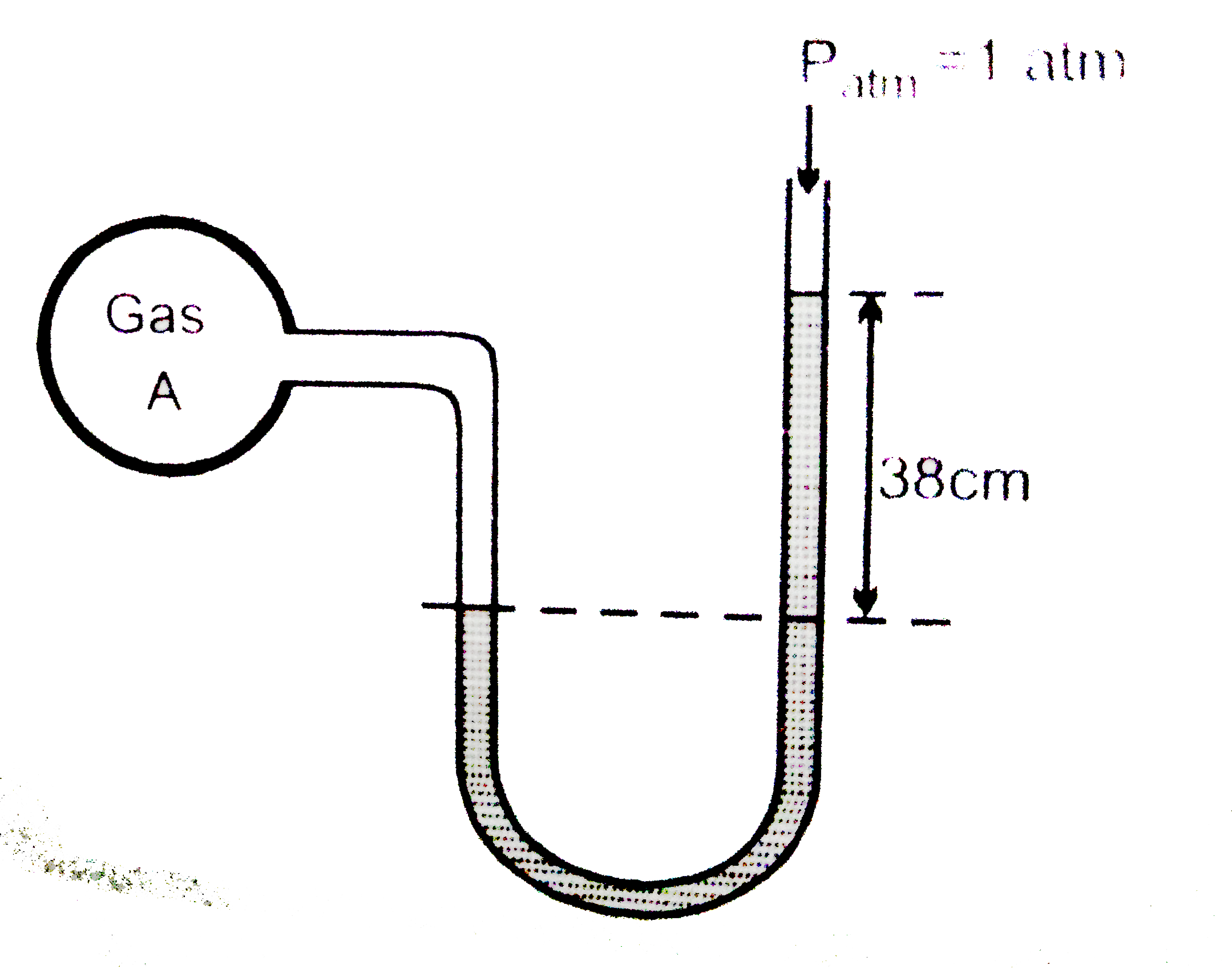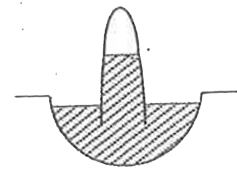Why mercury is used in barometer for measuring atmospheric pressure?
To answer the question of why mercury is used in barometers for measuring atmospheric pressure, we can break it down into several key reasons:
1. Non-Sticking Property:
- Mercury does not adhere to the glass surface of the barometer. This is important because it allows for a clear and accurate measurement of the height of the mercury column without any interference from the liquid sticking to the sides of the tube.
2. Non-Volatility:
- Mercury is non-volatile at room temperature, meaning it does not evaporate easily. This property ensures that the mercury remains in liquid form and does not change state, which is crucial for maintaining a consistent and reliable measurement of atmospheric pressure.
3. High Density:
- Mercury has a very high density (approximately 13.59 g/cm³ or 13,590 kg/m³). This high density allows a shorter column of mercury to balance the atmospheric pressure compared to other liquids. Consequently, barometers can be made smaller and more manageable while still providing accurate readings.
4. Inertness:
- Mercury is chemically inert, meaning it does not react with the materials of the barometer or the atmosphere. This stability ensures that the measurements are not affected by chemical reactions, providing consistent and reliable readings over time.
5. Temperature Stability:
- Mercury has a relatively small coefficient of thermal expansion, which means its volume changes very little with temperature fluctuations. This stability is important for accurate pressure readings, as temperature changes can affect the height of the liquid column.
Conclusion:
These properties make mercury an ideal choice for use in barometers, allowing for accurate and reliable measurements of atmospheric pressure.
---
- Mercury does not adhere to the glass surface of the barometer. This is important because it allows for a clear and accurate measurement of the height of the mercury column without any interference from the liquid sticking to the sides of the tube.
- Mercury is non-volatile at room temperature, meaning it does not evaporate easily. This property ensures that the mercury remains in liquid form and does not change state, which is crucial for maintaining a consistent and reliable measurement of atmospheric pressure.
- Mercury has a very high density (approximately 13.59 g/cm³ or 13,590 kg/m³). This high density allows a shorter column of mercury to balance the atmospheric pressure compared to other liquids. Consequently, barometers can be made smaller and more manageable while still providing accurate readings.
- Mercury is chemically inert, meaning it does not react with the materials of the barometer or the atmosphere. This stability ensures that the measurements are not affected by chemical reactions, providing consistent and reliable readings over time.
- Mercury has a relatively small coefficient of thermal expansion, which means its volume changes very little with temperature fluctuations. This stability is important for accurate pressure readings, as temperature changes can affect the height of the liquid column.
These properties make mercury an ideal choice for use in barometers, allowing for accurate and reliable measurements of atmospheric pressure.
Topper's Solved these Questions
- STATES OF MATTERBook:VMC MODULES ENGLISHChapter:STATES OF MATTERExercise:SOLVED EXAMPLES
Explore 20 Videos
- STATES OF MATTERBook:VMC MODULES ENGLISHChapter:STATES OF MATTERExercise:PRACTICE EXERCISE-1
Explore 3 Videos
- STATES OF MATTERBook:VMC MODULES ENGLISHChapter:STATES OF MATTERExercise:JEE-Advanced
Explore 78 Videos
- STATES OF MATTERBook:VMC MODULES ENGLISHChapter:STATES OF MATTERExercise:IMPECCABLE
Explore 50 Videos
- STOICHIOMETRY - IBook:VMC MODULES ENGLISHChapter:STOICHIOMETRY - IExercise:JEE Advanced (Archive)
Explore 31 Videos
Similar Questions
A manometer contains a liquid of density 5.44g/cm3 is attached to a flask containing gas 'A' as follows

If the same liquid is used in barometer to measure the atmospheric pressure, then what will be the lengh of the liquid columnm which exerts pressure equal to 1 atm ? (density of Hg=13.6g/cm3)
View SolutionA monometer contains a liquid of density 5.44g/cm3 is attached to a flask containing gas A'asfollows<br><imga≤ocr_imageload∈g=lazysrc=https://d10lpgp6xz60nq.cloudfront.net/physics_images/NRA_PHY_CHM_JMA_C03_E01_213_Q01.pngwh=80%sty≤=background:white;><br>Ifthesameliqusused∈¯ometer→measuretheatmosphericpressure,thenwˆwillbethe≤n>hoftheliquolumn,whichexertspressureequal→1atm?(densityofHg=13.6g//cm^(3))
View SolutionWhat would be the height of column in barometer if water (density=1000Kg/m3) is used instead of mercury for measuring atmospheric pressure?
View SolutionExplain why does the mercury level in a barometer go down when atmospheric pressure decreases?
View SolutionTorricelli was the first do devise an experiment for measuring atmospheric pressure . He took calibrated hard glass tube , 1 m in lengt and of uniform cross section , closed at one end . He filled the whole tube with dry mercury taking care than no air or water droplets remain inside the tube , closed the opposite end of the tube tightly with thumb and inverted it . He put this inverted mercury tube into a mercury through , taking care that the end of the tube remains inside the mercury through , An interesting thing was noticed . Mercury in the tube fell down at first and then stopped at a particular position . The height was 76 cm above the free surface of mercury in the through . When the given tube was inclined or lowered in the mercury trough , the vertical haight of mercury level in the tube was always found constant .
Torricelli explained this by saying that the free surface of mrcury in the trough . Hence , the hydrostatic pressure exerted by the trough measures the atmospheric pressure .

If a small hole is made at point P in the barometer tube , then

View SolutionTorricelli was the first do devise an experiment for measuring atmospheric pressure . He took calibrated hard glass tube , 1 m in lengt and of uniform cross section , closed at one end . He filled the whole tube with dry mercury taking care than no air or water droplets remain inside the tube , closed the opposite end of the tube tightly with thumb and inverted it . He put this inverted mercury tube into a mercury through , taking care that the end of the tube remains inside the mercury through , An interesting thing was noticed . Mercury in the tube fell down at first and then stopped at a particular position . The height was 76 cm above the free surface of mercury in the through . When the given tube was inclined or lowered in the mercury trough , the vertical haight of mercury level in the tube was always found constant .
Torricelli explained this by saying that the free surface of mercury in the trough . Hence , the hydrostatic pressure exerted by the trough measures the atmospheric pressure .

If this expriment uses water instead of mercury , then
A. length of water will be equal to 76 cm
B. length of water will be less than 76 cm
C. length of water will be greater than 76 cm
D. none of the above
View SolutionTorricelli was the first do devise an experiment for measuring atmospheric pressure . He took calibrated hard glass tube , 1 m in lengt and of uniform cross section , closed at one end . He filled the whole tube with dry mercury taking care than no air or water droplets remain inside the tube , closed the opposite end of the tube tightly with thumb and inverted it . He put this inverted mercury tube into a mercury through , taking care that the end of the tube remains inside the mercury through , An interesting thing was noticed . Mercury in the tube fell down at first and then stopped at a particular position . The height was 76 cm above the free surface of mercury in the through . When the given tube was inclined or lowered in the mercury trough , the vertical haight of mercury level in the tube was always found constant .
Torricelli explained this by saying that the free surface of mercury in the trough . Hence , the hydrostatic pressure exerted by the trough measures the atmospheric pressure .
If an additional hole is also made at P ' at the top point of the tube , then

A. mercury will not come out of the tube
B. mercury may come out of the tube after some time .
C. mercury will come out of the tube instantly
D. none of these
View SolutionLiquid pressure and atmospheric pressure
View SolutionWhich instrument is used to measure atmospheric pressure ?
View SolutionWhy mercury is used as a thermometric liquid?
View Solution
